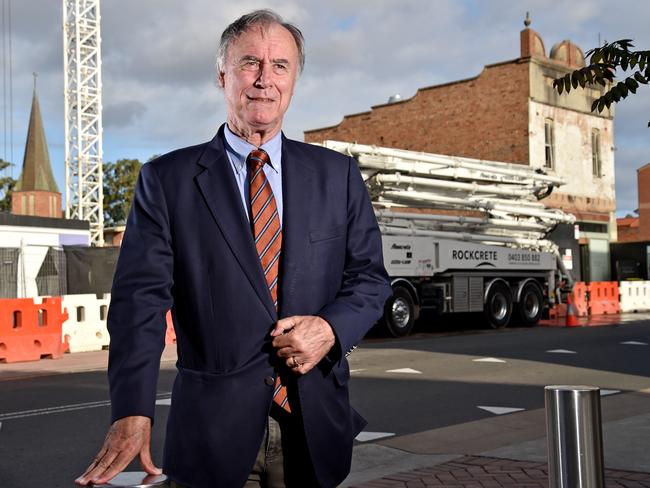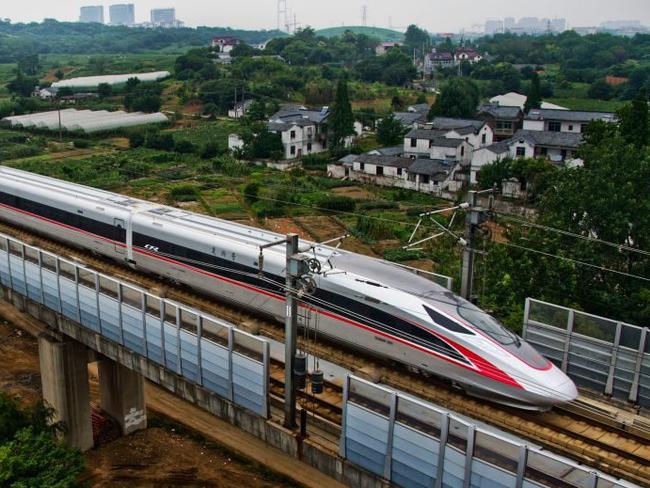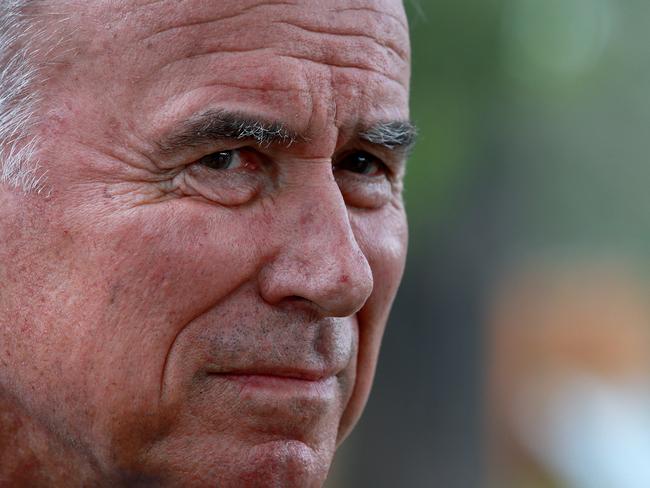High-speed rail and 30 minute trips at heart of Sydney ‘megacity’ proposal
A MAGIC bullet to solve Sydney’s growing pains by turning it into a “megacity” stretching from Newcastle to Nowra — all linked by high-speed rail — is set to be the centrepiece of a radical new proposal in a federal multi-party parliamentary report.

Northern District Times
Don't miss out on the headlines from Northern District Times. Followed categories will be added to My News.
- Fast rail discussion on connecting Badgerys Creek Airport to Parramatta and Sydney CBD
- A 15-minute train service from Parramatta to Sydney CBD is needed
A MAGIC bullet to solve Sydney’s growing pains by turning it into a “megacity” stretching from Newcastle to Nowra — all linked by high-speed rail — is set to be the centrepiece of a radical new proposal.
Bennelong Liberal MP John Alexander has lifted the lid on likely “strategic decentralisation” recommendations to come out of a federal infrastructure and better cities parliamentary inquiry he has been leading since the 2016 election.
The report — due out by mid-year — is expected to call for the creation of an agency and commissioner to oversee a “proper national plan of settlement” and put an end to 45 years of empty promises about high-speed rail in Australia.

In an exclusive and wideranging interview, Mr Alexander yesterday attacked state and federal governments “of all persuasions” for decades of planning “failures” as Sydneysiders battle “ridiculous congestion”.
“We have never had a plan of settlement and it’s absurd,” said the Australian Davis Cup tennis great, who was a victim of the dual citizenship fiasco last year before winning his seat back at a by-election in December.
“We have this massive imbalance where Sydney has the second-most expensive real estate in the world, ridiculous congestion and no planning of the city.
“Yes, we’ve got to play catch-up — but let’s take a pause here and plan Sydney properly.”
HIGH SPEED RAIL IN SOUTH KOREA
The Greater Sydney Commission has already proposed a “30-minute, three-city metropolis” for Sydney by 2056.
However, the Federal Government — which allocated $20 million in last year’s budget to investigate a business case for faster rail in Australia — could take “liveability” to a whole new level if it adopts the looming recommendations.
The inquiry has heard evidence by Korean, Chinese and Japanese high-speed rail operators that trips from Newcastle, Goulburn and Nowra to Homebush — which would become Sydney’s terminus — could take just 30 minutes.
And a journey from Gosford and Wollongong to Homebush would be only 15-17 minutes, five times faster than it is now.

“When you take in Nowra, Goulburn, Southern Highlands, Wollongong, the Central Coast, Newcastle and Maitland (with Sydney), it’s like a 10-city city,” Mr Alexander said.
“And if you can go (between all these locations) in such a short space of time, you’ve just leveraged it into a megacity.”
The three overseas operators have told the inquiry that a new high-speed rail network on the east coast could be up and running within the next five years.
THE JAPANESE BULLET TRAIN
“The Japanese say it’ll take two years to do the engineering and three-to four years to build the Sydney to Melbourne line,” Mr Alexander said.
“The current fastest high-speed train is in Korea at 430km/h and operates at about 370, compared to about 300 in Japan.
“The Koreans see under this technology it getting up to 500. And that would make a Sydney to Melbourne trip take less than two hours.”
LAND OF OPPORTUNITY
LATEST estimates put the cost of building the Sydney to Melbourne high-speed rail network at $50 billion.
However, Mr Alexander says this would be paid for — and more — by a ‘value capture’ model, which uses an increase in land values to fund infrastructure.
“If you announce this tomorrow and say here’s the zoning around Homebush Bay and where the first stop is going to be heading south around Southern Highlands and Goulburn, then speculators are not just speculating in the dark anymore,” he said.

“They know where the infrastructure is going, when it’s going in, and they’ve got their zoning.
“So the farmer will sell his or her farm for 100 or 1000 times the value right way, and those funds value captured are then quarantined (for the building of the rail network).
“You’ve only got to create 50,000 dwellings a year in the corridor between Sydney and Melbourne for 10 years and that raises the $50 billion.”
‘COMPELLING EVIDENCE’
Mr Alexander said his multi-party committee had heard “compelling evidence” from Gary Fisher, the head of Hitachi Consulting Australia which builds the signalling systems and rolling stock for high-speed rail in Japan.

“Gary said there’s nowhere else in the world, because of the extraordinary value of land in Sydney and Melbourne, and the relative price of land in the corridor in between, where value capture could entirely fund high-speed rail,” he said.
“If we can get our densification and infrastructure right within our cities and have a plan of strategic decentralisation, we could actually create a megacity of Sydney where we have more people with access to the Sydney CBD than any other CBD in the world.”
‘NO REAL PLAN’ ON IMMIGRATION
JOHN Alexander has taken a swipe at his own government for having “no real plan” on how to “properly” accommodate Australia’s migrant intake.
He sees the hot-button immigration issue as inextricably linked to his push for a national plan of settlement.

“This is an issue where politics comes in and reason leaves the room,” Mr Alexander said.
“One group says we’ve got to get rid of (immigration), which is really popular because people in Sydney think we’re being crowded out.
“But if you just think about it for a while, the obvious answer is, you have to have a plan to accommodate any rate of immigration and provide jobs.
“So until you have that plan, you can’t say any number is correct or incorrect.”
He said current immigration levels were “pushing the limit” — but that’s because “we have no real plan”.
He called on his government to consider creating a “Reserve Bank-style” body which regularly monitors immigration levels.
“When we talk about creating affordable housing for generations to come, it actually creates a plan to accelerate immigration,” Mr Alexander said.
“But it has to be in line with our capacity to house and provide work for these people.
“It’s not about the maximum number; it’s the optimum number (of migrants).”
NEED FOR ANOTHER ‘BIG THINKER’
THE last true visionary for Sydney was Harbour Bridge designer Dr John Bradfield, according to John Alexander.
“He was the last really big thinker for Sydney; a visionary of planning,” the Bennelong MP said.

“If we had the chance to build the Harbour Bridge again, we wouldn’t build it.
“And if you look at the history of the Harbour Bridge, it was funded by value capture … by those who had uplifted property values on the northern side, and it was promised 100 years before it was actually opened (on March 19, 1932).
“And the eastern suburbs railway line was promised by a government coming into power nearly 100 years before it was opened (on June 23, 1979).”
IN OTHER NEWS
Mr Alexander — who is chair of the Standing Committee on Infrastructure, Transport and Cities — said it was high time all governments “climbed on board” to make faster trains a reality for long-suffering Australians.
“High-speed rail has been talked about since the Whitlam years (in the mid-1970s),” he said.
“We need to stop the procrastination and give autonomy to our planning agencies and get politics out of it.”


